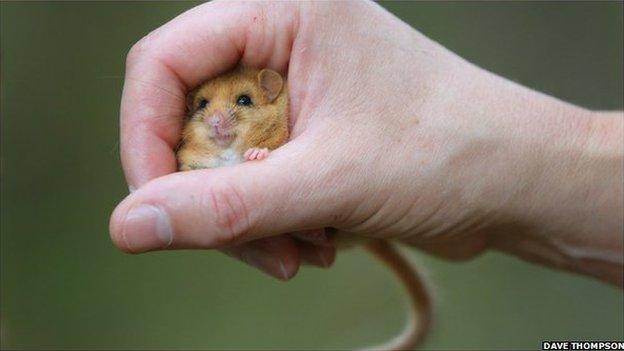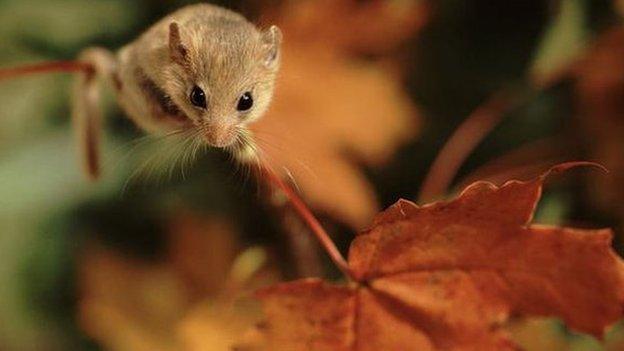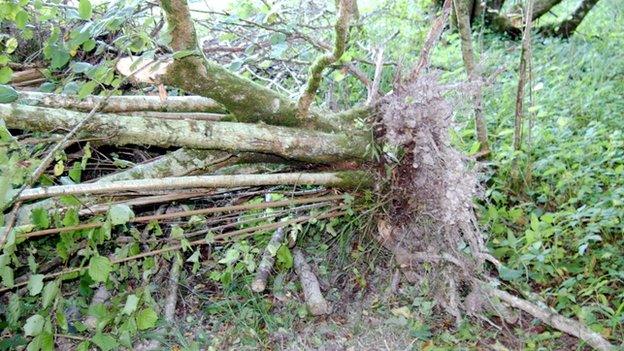Promiscuous dormice help litters thrive, study finds
- Published
The team has microchipped and recorded 920 dormice in north Wales
Female dormice which have offspring with more than one father in the same litter can help ensure their survival, a 10-year study has found.
The decade-long research led by staff from Chester Zoo and Natural Resources Wales has observed behaviour never seen in the UK before.
The researchers studied a group of hazel dormice in Denbighshire as part of the project.
It found some dormice breed before they are one year old.
The research also established that some produce two litters in a year, which was known behaviour in continental European mice but had never been observed in the UK before.
The study is the longest and largest of its kind in the UK.

Dormice numbers have been in decline over the past 25 years
Protected species
Chester Zoo's biodiversity officer Sarah Bird said: "Promiscuity in females had never been recorded before; and it will increase genetic diversity within litters, helping population survival.
"Equally important are the other breeding behaviours we have seen.
"It is likely that those years when females breed twice, and the young of the year also breed, is when populations can really increase.
"These behaviours are likely to be critical for healthy sustainable dormouse populations in the UK."
Hazel dormice are protected under European law.
The numbers of dormice and the range of the species have both been in decline since recording of the animals and their habitat began in 1990.
However the Denbighshire site at Bontuchel, near Ruthin, showed a large, stable population of dormice.
"Our survey site in north Wales is on the very north western edge of their European range and, from the very start, we've been surprised by how many hazel dormice are there," Ms Bird explained.
"That's why it's a very important project and a very important site for study, to understand why this woodland is so good for dormice."
- Published26 November 2014

- Published2 December 2014
